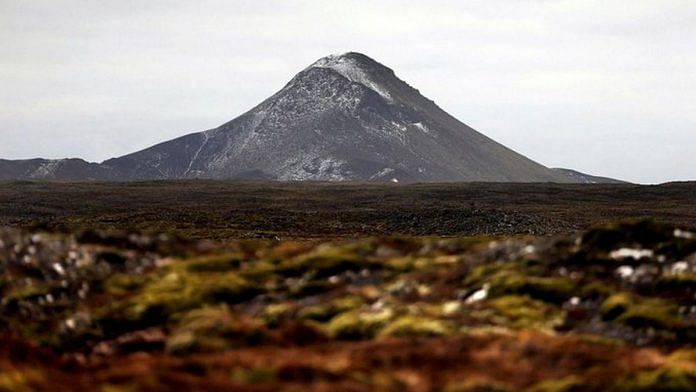Bengaluru: The southwestern part of Iceland has seen a sudden surge in seismic activity, leading scientists to believe that a volcanic eruption is imminent in the area. In just over a week, 18,000 quakes have shaken the region.
The intense seismic activity has peaked after nearly a year of regular quakes in the area, which includes some that were felt even in the capital city of Reykjavik.
The volcano that is expected to go off is likely to be either the Sundhnjúkagígaröð (pronounced sundh-new-kagiga-redh) or the nearby Fagradalsfjall (pronounced fagra-dals-fyell) in the Þráinsskjaldarhraun (pronounced thouwins-skalthaa-hrehn) lava field, that has remained dormant for 800 years. It lies in the Reykjanes peninsula, which has at least five volcanic systems and is home to the Keilir volcano.
The Reyjkanes peninsula lies in southwest Iceland and is home to the Keflavik International Airport, as well as the popular tourist attraction, the Blue Lagoon.
The country’s meteorological department has, however, clarified that any eruption will just probably be effusive lava flow with very little explosive activity, and residents nearby are not at risk. However, the main long winding road that connects the airport to the capital city of Reykjavik could be impacted.
The earthquake swarm began on 24 February, and just this week, tremor pulses, or faint vibrations deep under the ground, indicating rising magma, were felt between the Keilir volcano and the Fagradalsfjall, according to the Icelandic Meteorological Office. This area hosts a magma chamber — a large pool of magma under the ground.
There are multiple live-streams available online tracking the volcanic activity, with cameras pointing at the mountains of Keilir and Fagradalsfjall. There is also a website that answers the question, “Has there been an eruption?”
Also read: Scientists observe ‘space hurricane’ over North Pole that spanned 1,000 km, swirled for 8 hrs
Volcanism in Iceland
Iceland consists of at least 30 volcanic systems, and its active geology is driven by the Mid-Atlantic Ridge, where the North American tectonic plate has been separating from the Eurasian plate. As a result, Iceland experiences constant seismic activity, resulting in minor earthquake swarms all year round.
The island nation has also experienced deadly volcanic eruptions, the most recent being the Eyjafjallajökull volcano in the southern part of the country in 2010. The immense quantities of ash spewed by the volcano at the time had caused the largest airline and travel disruptions since World War II, and the emissions spread through most of Europe.
The eruption, which began in April that year was officially declared over by October, after three months of inactivity. The emission was preceded by a swarm of quakes that began in December of 2009, which was a culmination of low magnitude seismic activity that was occurring in the region since 2006.
The current quake swarm is centered close to Fagradalsfjall, a smaller volcanic system that hasn’t been active in 6,000 years. There is also another cluster of quakes around the Krysuvik (pronounced kris-you-veek) volcanic system.
During very strong earthquake swarms in Iceland, the ground can sometimes rupture and magma can reach the surface due to the nature of tectonic activity in the region. The quakes have been comparatively mild this time, with the highest being recorded at 5.7 on the Richter scale.
According to the University of Iceland, the strongest case for an eruption is in the Fagradalsfjall region, and any effusive flow could potentially last a few weeks.
The live data from Iceland’s Met office can be found here.
Also read: Covid ‘X Men’ — the 7,000+ mutations in India, how to understand them & where they came from




The Laki eruption lead to the French Revolution. The sky will be red and famine will be rife. The augurs were right, the gods announce their will through the sky
I don’t know what’s worse, the eruption or the ordeal of pronouncing the volcano’s name
Don’t know whether these volcanoes will explode or not but my mind & tongue both exploded & twisted by just giving a chance to read & pronounce these caterpillaric & centipedic shapy words